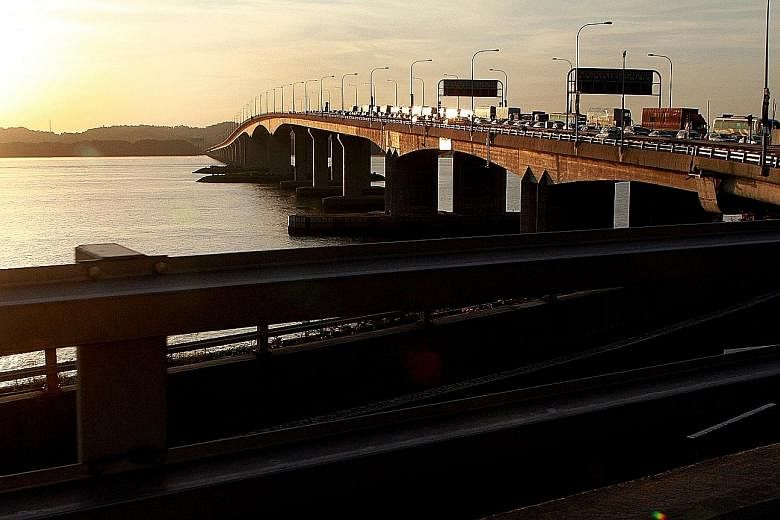In connecting Singapore and Malaysia, will the planned high-speed rail (HSR) run across a bridge spanning the Johor Strait, or will an undersea tunnel have to be built for it? The decision will be made jointly by the governments of both countries.
In May, however, the state government of Johor said it hoped an undersea tunnel would be built, reported Malaysian newspapers.
But experts believe a bridge is more likely as building an undersea tunnel will be more complex, costly and time-consuming.
ECAS-EJ Consultants managing director Chan Ewe Jin said an undersea tunnel is unlikely and "it's definitely easier to have it on an elevated structure". He boils down the issue to either building the line on the existing Second Link from Tuas, or having a new bridge for it.
The tight deadline for completing the rail link may be a factor too.
Associate Professor Lee Der Horng of the Department of Civil and Environmental Engineering at the National University of Singapore said: "I feel a bridge is more likely because an undersea tunnel is more costly and takes more time."
Also, with both governments aiming to have the rail line running by 2026, it would be "easier" to build a bridge than a tunnel, he added.
The 2026 target was one of several points of agreement in a memorandum of understanding signed by the two governments on Tuesday.
In discussing the HSR, a popular comparison is the Eurostar, which runs through a tunnel under the English Channel linking Britain and France. One reason a tunnel was chosen is that the Channel is one of the world's busiest shipping lanes and a bridge may be an obstacle to traffic.
But the existing 1.9 km Tuas Second Link bridge does not pose such a problem, and neither would a new rail bridge, Prof Lee said.
One cross-border rail link that relies on a bridge and undersea tunnel is that between the Danish capital Copenhagen and the Swedish city Malmo. The trains reach speeds of up to 200kmh. The rail line runs along the Oresund bridge from the Swedish coast to an island, then finishes the last one-third of the crossing via an undersea tunnel.
Janice Heng

